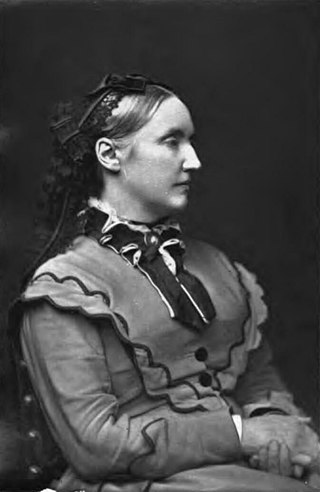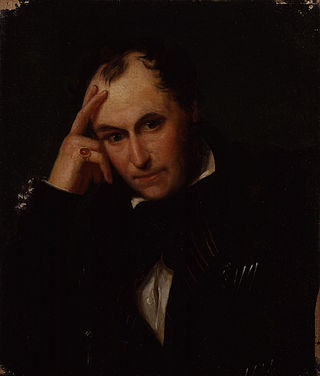

Eliza Vere Foster (Cheltenham, 25 July 1802 - Bergamo, 4 October 1888) was an English author and literary translator from Italian, Spanish and German.


Eliza Vere Foster (Cheltenham, 25 July 1802 - Bergamo, 4 October 1888) was an English author and literary translator from Italian, Spanish and German.
After studying classic and modern languages, and already a widow at 30, [1] on 7 March 1832 in Chelwood Eliza married another widower, Jonathan Foster [2] [3] (Hilston in Holderness, Yorkshire, 1782 - Paris, 1859 [4] ), with whom she had a son who later worked as deputy commissioner of customs in British India until he suddenly died there in 1870. [5]
Eliza Foster worked as translator for publisher Bohn, most notably by translating and adding careful and abundant annotations to the first English-language translation (as "Mrs. Jonathan Foster") of the 5 volumes of Vasari's Lives of the Most Excellent Painters, Sculptors, and Architects in 1850–1851. According to professor Patricia Rubin of New York University, "her translation of Vasari brought the Lives to a wide English-language readership for the first time. Its very real value in doing so is proven by the fact that it remained in print and in demand through the nineteenth century." [6]
She also translated from German (as "E. Foster") Leopold von Ranke’s History of the Popes for H. G. Bohn’s Standard Library (3 vols; 1847–48), in the preface of which she noted how the ‘noble office of the historian’ required ‘unwearied patience in research [and] a pure conscientiousness and profound respect for the sacredness of Truth’. [6]
As author, Eliza Foster published two travelogues on Bohemia and Saxony (1857) and on Silesia and Austria (1859) with the pseudonym "An Old Traveller", as well as the novel The Boatman of the Bosphorus (1854) under the name "The Osmanli Abderahman Effendi." [5] Together with Anna Maria Hall, Eliza Foster also published a pedagogical volume of Stories and Studies from the Chronicles and History of England (1847). [6]
With the pseudonym of "An Old Traveller", Eliza Foster also published two articles in The Art Journal in 1856 and 1857: ‘Suggestions of Subject to the Student in Art by an Old Traveller’ and ‘Talk of Pictures and the Painters by an Old Traveller’. The journal editor, Samuel Carter Hall (husband of Anna Maria Hall), introduces her as an "accomplished lady" possessing a "very rare" combination of "extensive reading, acquaintance with many languages, the advantage of travelling in several countries, and above all an intimate acquaintance with Art, in the past and in the present". According to Rubin, "Mrs Foster’s contributions to art writing are both representative and real. Her articles in the Art Journal represent the informed taste and moralizing opinions typical of mid-Victorian appreciation of art and of its social importance." [6]
After the death of her husband in 1859, Eliza Foster had to rely on her own literary work (and until 1870 on her son) to support herself. She also ensured the education of her two grandsons (whome she taught Latin and Greek) and a granddaughter. As of 1874 she was residing at Casa Finardi, Bergamo Alta. Due to her economic conditions and late-age infirmity, she several times applied and was granted support by the Royal Literary Fund between 1874 and 1883. [5] She is buried in the evangelical section of the Bergamo cemetery. [7]


Eliza Rosanna Gilbert, Countess of Landsfeld, better known by the stage name Lola Montez, was an Irish dancer and actress who became famous as a Spanish dancer, courtesan, and mistress of King Ludwig I of Bavaria, who made her Gräfin von Landsfeld. At the start of the Revolutions of 1848 in the German states, she was forced to flee. She proceeded to the United States via Austria, Switzerland, France and London, to return to her work as an entertainer and lecturer.

Leopold von Ranke was a German historian and a founder of modern source-based history. He was able to implement the seminar teaching method in his classroom and focused on archival research and the analysis of historical documents. Building on the methods of the Göttingen School of History, he was the first to establish a historical seminar. Ranke set the standards for much of later historical writing, introducing such ideas as reliance on primary sources (empiricism), an emphasis on narrative history and especially international politics (Außenpolitik). He was ennobled in 1865, with the addition of a "von" to his name.

Anna Maria (Annie) Keary was an English novelist, poet and an innovative children's writer.

Sarah Austin was an English editor, linguist and translator from German-language books. She did much to make Germany familiar to the English.

Franz Xaver Winterhalter was a German painter and lithographer, known for his flattering portraits of royalty and upper-class society in the mid-19th century. His name has become associated with fashionable court portraiture. Among his best known works are Empress Eugénie Surrounded by her Ladies in Waiting (1855) and the portraits he made of Empress Elisabeth of Austria (1865).

Eliza Acton was an English food writer and poet who produced one of Britain's first cookery books aimed at the domestic reader, Modern Cookery for Private Families. The book introduced the now-universal practice of listing ingredients and giving suggested cooking times for each recipe. It included the first recipes in English for Brussels sprouts and for spaghetti. It also contains the first recipe for what Acton called "Christmas pudding"; the dish was normally called plum pudding, recipes for which had appeared previously, although Acton was the first to put the name and recipe together.

Judy Catherine Claire Parfitt is an English theatre, film, and television actress. She made her film debut in the 1950s, followed by a supporting role in the BBC television serial David Copperfield (1966). She also appeared as Queen Gertrude in Tony Richardson's 1969 film adaptation of Hamlet.

Richard Ford (1796–1858) was an English travel writer known for his books on Spain. Born in Chelsea into an upper class family and educated at Oxford, he first moved to Spain in 1830, where he travelled extensively and collected notes and drawings. Upon return to England, he wrote an account of his journeys in A Handbook for Travellers in Spain, first published in 1845, described as one of masterpieces of the travel literature genre. An erudite art collector, he befriended many important art and literature figures of his time. Ford was himself skilled in drawing himself, and made illustrations for his own and his friends' books.
Selina Bunbury (1802–1882) was an Anglo-Irish novelist and traveler.
The bibliography of Charles Dickens (1812–1870) includes more than a dozen major novels, many short stories, several plays, several non-fiction books, and individual essays and articles. Dickens's novels were serialized initially in weekly or monthly magazines, then reprinted in standard book formats.

The Lives of the Most Excellent Painters, Sculptors, and Architects, often simply known as The Lives, is a series of artist biographies written by 16th-century Italian painter and architect Giorgio Vasari, which is considered "perhaps the most famous, and even today the most-read work of the older literature of art", "some of the Italian Renaissance's most influential writing on art", and "the first important book on art history".

Eliza Leslie (1787–1858), frequently referred to as Miss Leslie, was an American author of popular cookbooks during the nineteenth century. She also wrote household management books, etiquette books, novels, short stories and articles for magazines and newspapers.
Elizabeth Caroline Grey (1798–1869), aka Mrs. Colonel Grey or Mrs. Grey, was a prolific English author of over 30 romance novels, silver fork novels, Gothic novels, sensation fiction and Penny Dreadfuls, active between the 1820s and 1867. There is some controversy about the details of her life story, and if she actually authored any penny dreadfuls.
Elizabeth Strutt, also or previously known as Elizabeth Byron, was an English writer and traveller. She was the wife of Jacob George Strutt and mother of Arthur John Strutt, and an acquaintance and critic of Elizabeth Barrett Browning, whom she describes as having written "two of the most absurd and the most unpleasing sonnets in the English language". In the 1820s and 1830s she travelled in France and Switzerland, living for a time at Lausanne, and later with her husband and son moved to Rome.

Elizabeth "Eliza" Ann Ashurst Bardonneau was a member of an important family of radical activists in mid-nineteenth-century England and the first translator of George Sand's work into English. The family supported causes ranging from women's suffrage to Italian unification.

Matilda Mary Hays was a 19th-century English writer, journalist and part-time actress. With Elizabeth Ashurst, Hays translated several of George Sand's works into English. She co-founded the English Woman's Journal. Her love interests included the actress Charlotte Cushman, with whom she had a 10-year relationship, and the poet Adelaide Anne Procter.

AnnHall (1792–1863) was an American painter and miniaturist.

Lucrezia Buti was an Italian woman who became a Dominican novice and later, the lover of the painter Fra Filippo Lippi and the mother of their son and daughter. She is believed to be the model for several Madonnas featured in Lippi's paintings.

Catherine Mawer was an architectural sculptor who worked alongside her husband Robert Mawer, then following his death in 1854 she ran the family stone yard as a master sculptor at Great George Street, Leeds, West Yorkshire, England, until 1859. The other master sculptor in her 1854–1859 company, which was known as Mrs Mawer, was her nephew William Ingle who supervised the stone yard and onsite works from 1854. Her apprentices were Matthew Taylor, Benjamin Payler, and her son Charles Mawer. All the apprentices later had independent careers as sculptors. After her son came of age in 1870, she continued working alongside Charles and her nephew William in the partnership Mawer and Ingle at the same address. Catherine was a founder member of the Mawer Group, which comprised all of the above Leeds architectural sculptors. During her lifetime, the Mawer group produced some strongly lifelike and often unflattering portraits, full of movement, including portraits of men with overhanging moustaches and cavernous mouths. These portraits continued after the deaths of Robert Mawer and William Ingle, but stopped appearing at her death in 1877. It is therefore reasonable to conclude that this style of work was her own.

Emily Augusta Patmore was a British author, Pre-Raphaelite muse and the inspiration for the 1854-1862 poem The Angel in the House.